Churrasco–Chilean Steak Sandwiches
If you’ve been following this blog and you’re feeling a little deja vu right now, you’ve come by that feeling honestly. Churrasco is far from the first Chilean steak sandwich we’ve covered. So what is it that differentiates Churrasco from other Chilean steak sandwiches?
Nothing. Or, that is, we’re asking the question wrong. We should be asking, what is it that differentiates other Chilean steak sandwiches from Churrasco? Churrasco, after all, refers to the basic category of steak sandwiches in Chile. By using specific combinations of ingredients, we make a Churrasco into another sandwich. So, for example, Churrasco con queso would become the Barros Luco we covered in November 2014. Churrasco con tomate y porotos verdes would become the Chacarero we covered earlier this year. Churrasco is the genus; specific steak sandwiches are the individual species.
This time around, I shouldn’t hear from any Chilean commenters that I shouldn’t have used this ingredient or that bread, because with a broad category like Churrasco, pretty much anything goes. So hey, I got a smoked tri-tip sandwich with cole slaw from Lillie’s Q the other day–is that a Churrasco sandwich?
To try and make the experience as authentically Chilean as possible, I finally got around to ordering a real Chilean condiment, Don Juan brand Aji Chileno. It’s a rich, thick chili pepper sauce with a bit of vinegary tartness. It had a bit more heat than I was expecting, given the relatively mild tastes of South American cuisine, but not overwhelmingly so. It has the consistency of your basic rooster sauce but a flavor more like a mild sambal oelek.
I also baked pan amasado again, and may have made my best batch yet. Maybe I’ll make marraqueta one day, but honestly it looks like a pain in the ass.
And of course the steak in a Chilean Churrasco sandwich is generally going to be sirloin, pounded thin and cooked a la plancha.
Certain combinations of ingredients have their own names in Chilean cuisine. For example a steak sandwich without any additional accompaniment (or perhaps with just a little hot sauce to season the meat) would be called Churrasco clásico. It’s a simple sandwich but, as the name suggests, a classic. The aji sauce helps liven it up a bit.
Adding mayonnaise, tomato, and palta or mashed-up avocados to a sandwich makes it an Italiano, with the green avocado, red tomato, and white mayonnaise representing the colors of the Italian flag. It’s a sloppy sandwich–Chileans are not shy about putting mayonnaise on their sandwiches–but has a great combination of flavors.
Some people prefer their Churrascos a bit more simple, and might order them with only tomatoes. I like this one particularly well–we’re just about into prime tomato season, and while these were good, this sandwich would be substantially better a month from now with some perfectly ripe beefsteak tomatoes.
Avocado is another common choice. Chileans generally mash their avocados up with just a bit of salt and olive oil to make palta, though I like to squeeze a little lemon juice into mine.
The ultimate version of the Churrasco is probably the Churrasco Completo. Completo basically means “with everything” and in Chile this is often going to mean at least mayonnaise, tomato, avocado, and chucrut (sauerkraut), possibly cheese, ketchup, onion, mustard, pebre, or anything else the sandwich-maker has on hand. Mustard and sauerkraut haven’t been on display in any of our Chilean sandwiches so far, but waves of German immigration have had their effect on Chilean cuisine, and they are common sandwich additions there.
Frankly, I think the Completo is a bit too much. I like every flavor in here (well, except maybe for ketchup) but when you put them all together the combination is a mess, both in terms of flavor and in terms of trying to eat it without wearing it. Chilean cuisine tends toward massive sandwiches like this, with tons of condiments, and are often eaten with a knife and fork rather than by hand.
Perusing some Chilean menus online, I’ve found other interesting takes on the Churrasco, such as the Chemilico with steak, onions, and a fried egg (sometimes called Churrasco a lo pobre or “poor man’s steak,” especially when served with fries); Jamaicano, with cheese and avocado (another flag reference possibly, with green avocado, yellow cheese, and black for the steak I guess); or the Napolitano with tomato, oregano, and olives, though I’ve also seen it with ham, such as at this specific delivery restaurant serving a whole bunch of variants.
The variations on the theme are innumerable in fact–one place might serve a Churrasco with mushrooms and cheese–called Francesa some places; another might serve one with mushrooms, asparagus, and mayonnaise, possibly a play on the Chacarero; most places will likely have one with lettuce, tomato, and onion on the menu, often called Gallego. Americano can mean just about anything, from bacon and BBQ sauce to mayonnaise, lettuce, and pickles, but if you see Americana on a recipe, that is likely short for salsa Americana, sort of a Chilean take on our pickle relish. Some restaurants will have their own proprietary named variants as well: the Feudal, with sauteed bell pepper, tomato, avocado, corn, mayonnaise; the Charrua, with avocado, sauteed mushrooms, arugula, onion rings and mayonnaise.
I’ve got limited time, money, and stomach space. I’m not trying all of them at this time. Who knows? Somebody might edit the Wikipedia List one day and put these variations on there. I’ll leave some mystery for the future. From my first round of sandwiches, and from my previous experience with Chilean sandwiches, I had a good idea what I would like to try.
My first attempt at the Churrasco de Jim involved cooking the steak along with some onion and tomato slices a la plancha, then adding pebre and Aji Chileno. The cooked onion/tomato mixture provided both sweet and savory flavors, while the sauces gave some brightness and heat. It was an excellent version.
Churrasco de Jim #2 was a little weirder. I used sauerkraut, along with grilled onions, Muenster cheese, and salsa golf. A Reuben with a bit of a Chilean twist, I guess you could say. Except that I mixed some of the Aji Chileno into the sauerkraut to make it into a sort of Chilean kimchi. I had the kraut and onions going on the griddle together for just a minute while I finished melting the Muenster.
I’d like to tell you this was the greatest sandwich yet. I wanted it to be. But changing one or two things around can completely throw off a sandwich’s balance. A Reuben is a balance between the 2 powerful flavors of corned beef and sauerkraut, with a couple of strong supporting players in the rye bread and Russian dressing (or even Thousand Island), and tied together by the creamy, nutty, yet ultimately mild flavor of Swiss cheese.
This sandwich had 1 extremely strong flavor–the sauerkraut. Even without the hot sauce added, it would have dominated. Muenster, perhaps slightly more flavorful than Swiss, stepped up into a secondary role, along with the griddled steak and salsa golf. The pan amasado, great bread but much milder than a robust rye would be, faded into the background. There are textural elements to a Reuben as well, and on that note this sandwich was similar. But the flavors didn’t quite work out the way I wanted. I ate the whole damn thing (with a fork and knife, proving its Chilean provenance) and liked it, but it wasn’t what I wanted it to be.
To be honest, my favorite was probably the simple Churrasco con tomate, followed closely by my tomato/onion/pebre combo. A lot of them were pretty good though, once you got past the necessity of a fork and knife. Before this week I’d never have thought you could burn yourself out on steak sandwiches but right now? Give me a salad or something. See you in August.

I like sandwiches.
I like a lot of other things too but sandwiches are pretty great


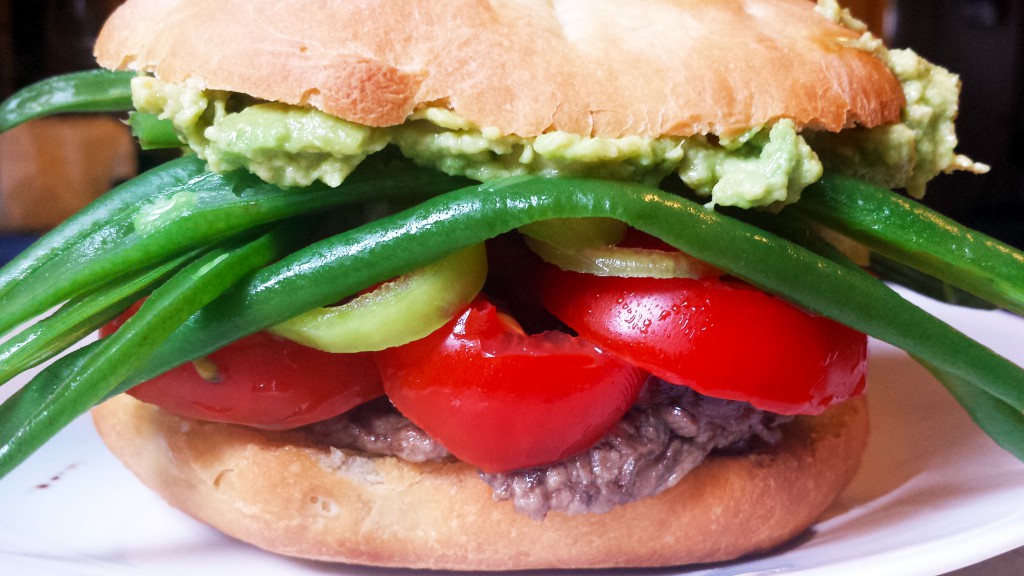
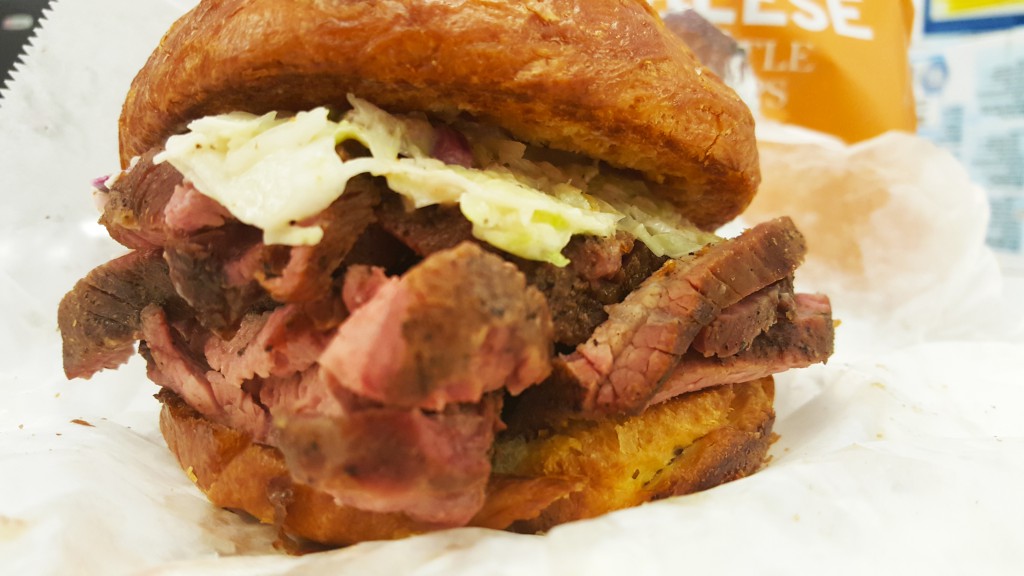
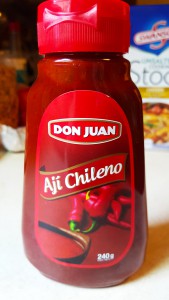
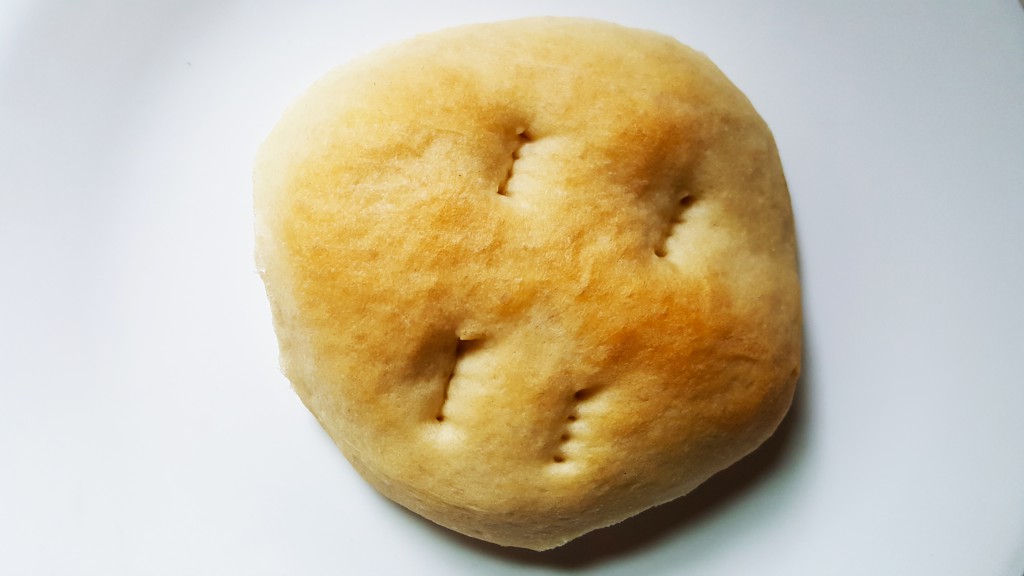
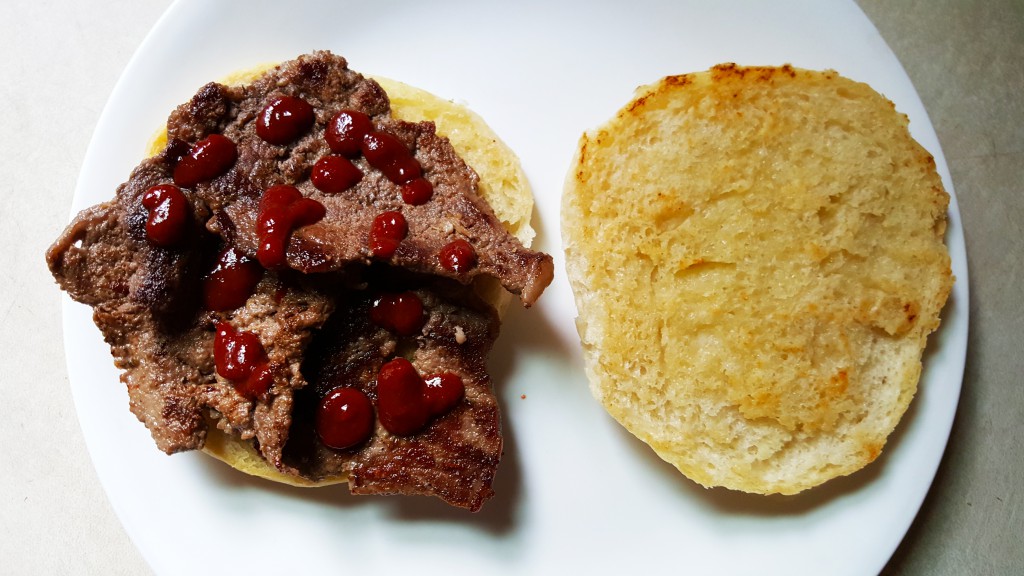
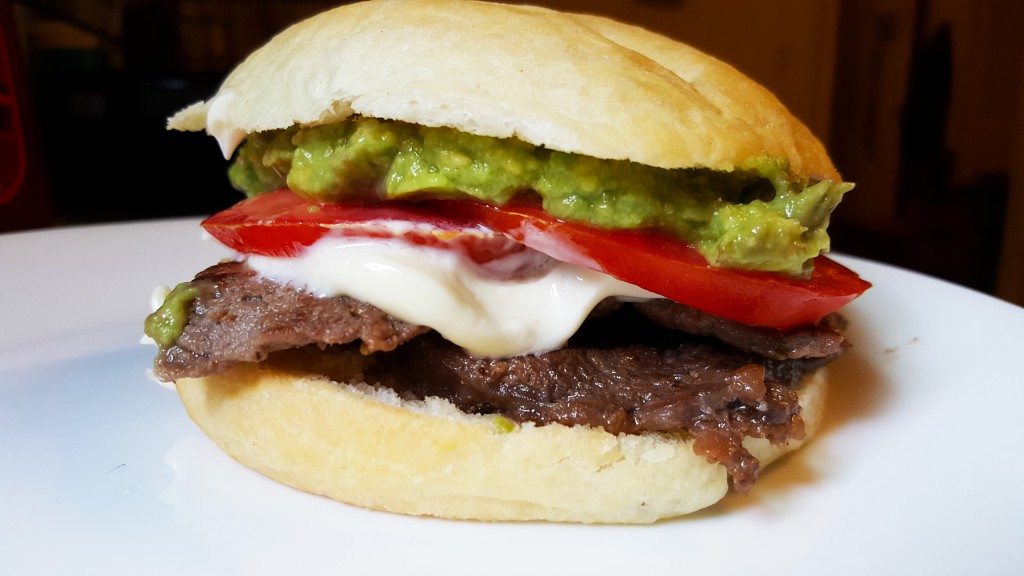
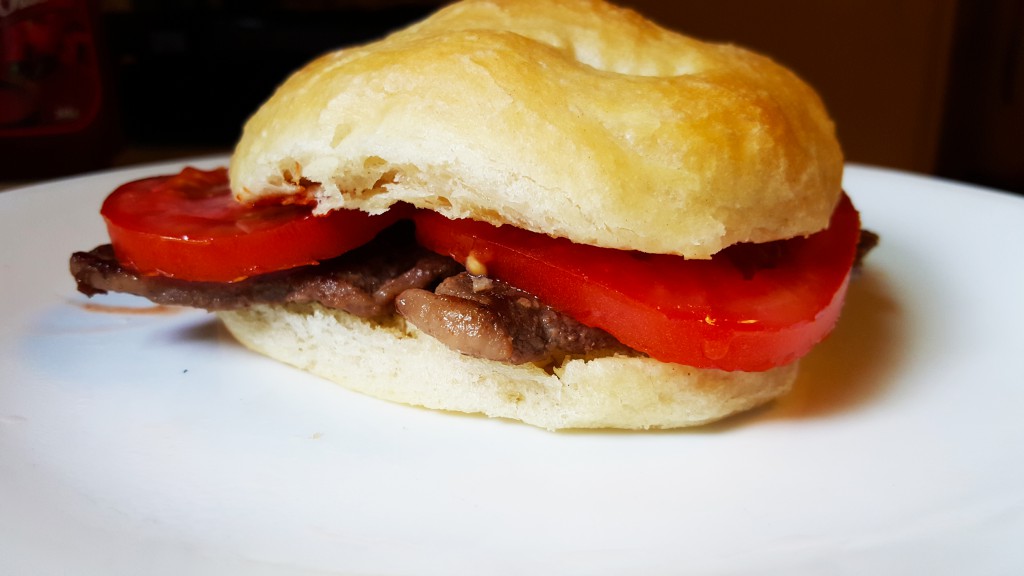
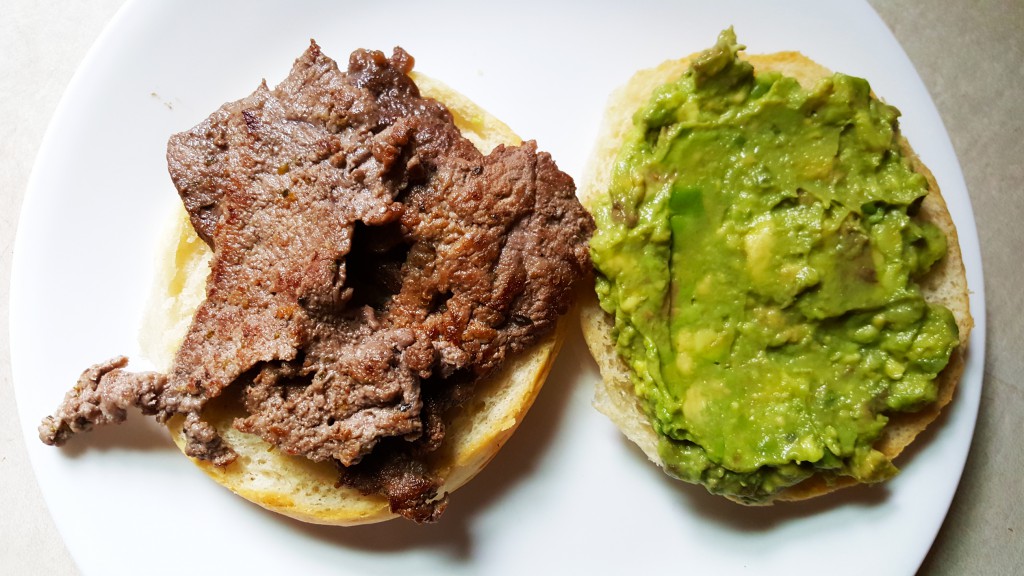
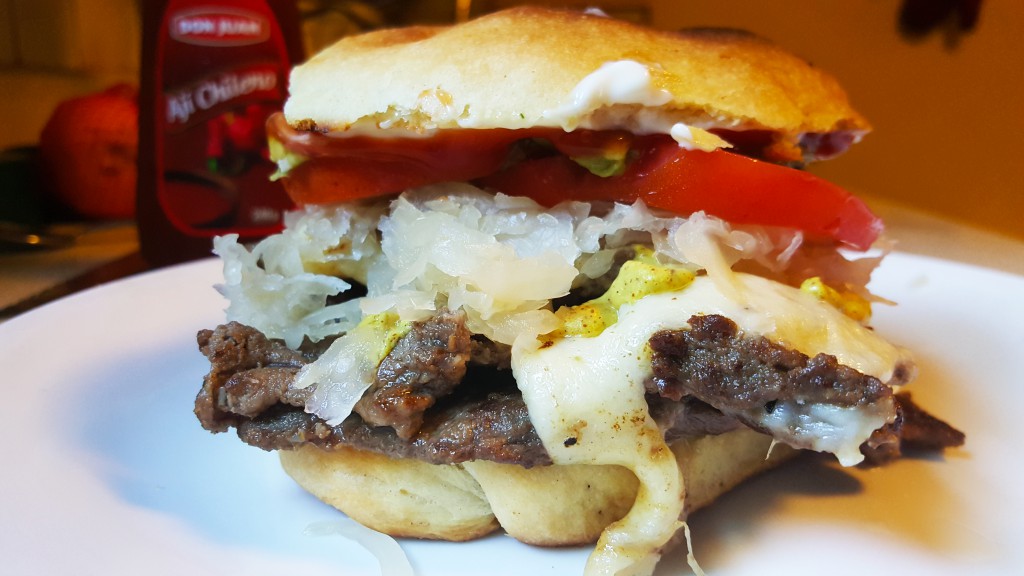
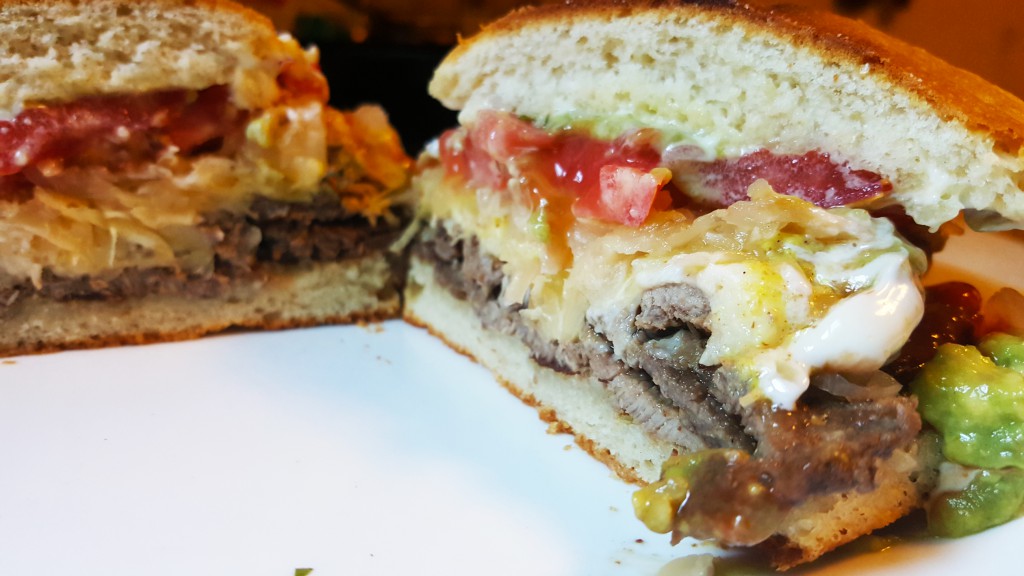
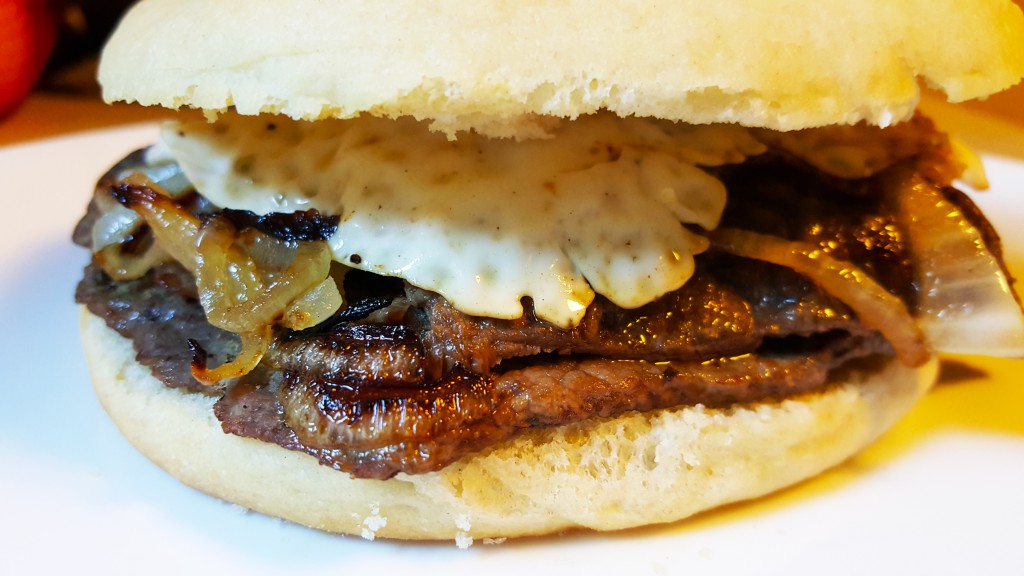
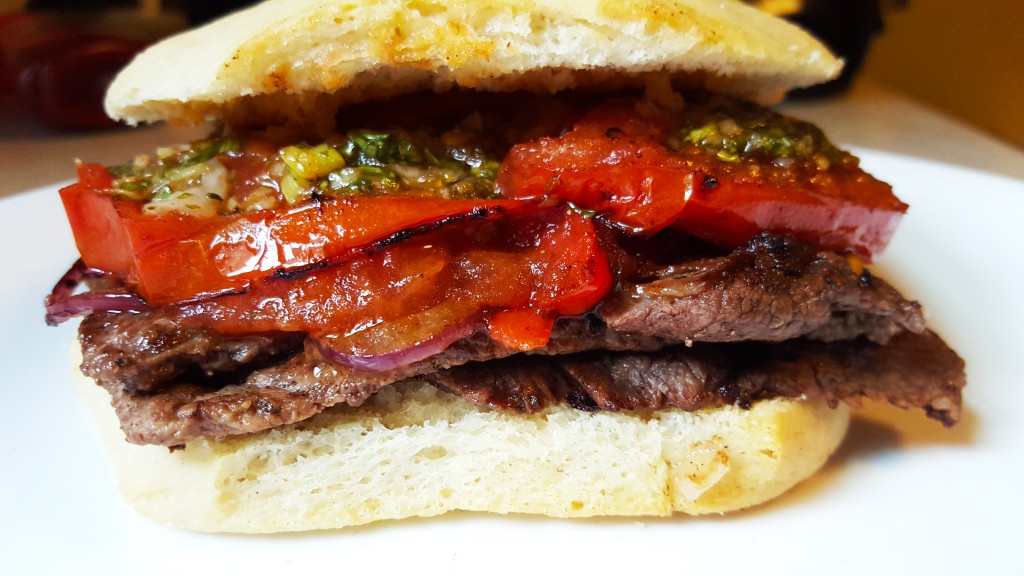
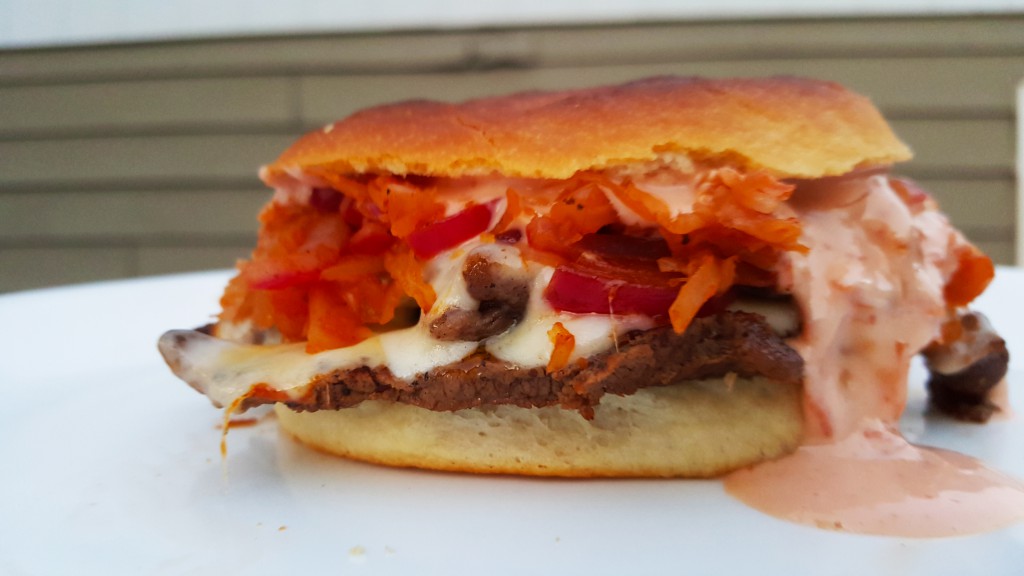









I was just in Chile and I had a churrasco sandwich with ham, cheese, churrasco, and a fried egg. The Chileans certainly aren’t shy about their portions or the richness of their food.